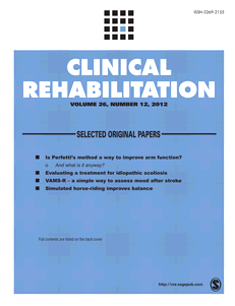
PHYSICAL THERAPY & REHAB
Active, passive and PNF stretching are equally effective after knee arthroplasty
This report has been verified
by one or more authors of the
original publication.
Clin Rehabil. 2010 Oct;24(10):911-8
117 patients undergoing total knee arthroplasty (TKA) for osteoarthritis (OA) were randomized to receive postoperative stretching with either active stretching, passive stretching, or propioceptive neuromuscular facilitation (PNF) stretching. The changes in active and passive knee flexion range of motion (ROM) over 2 weeks was assessed. Significant improvement was found in all three groups in both active and passive ranges, with no significant difference between groups.
Unlock the full ACE Report
You have access to {0} free articles per month.Click below to unlock and view this {1}
Unlock NowCritical appraisals of the latest, high-impact randomized controlled trials and systematic reviews in orthopaedics
Access to OrthoEvidence podcast content, including collaborations with the Journal of Bone and Joint Surgery, interviews with internationally recognized surgeons, and roundtable discussions on orthopaedic news and topics
Subscription to The Pulse, a twice-weekly evidence-based newsletter designed to help you make better clinical decisions
Exclusive access to original content articles, including in-house systematic reviews, and articles on health research methods and hot orthopaedic topics
Or upgrade today and gain access to all OrthoEvidence content for just $1.99 per week.
Already have an account? Log in


Subscribe to "The Pulse"
Evidence-Based Orthopaedics direct to your inbox.
{0} of {1} free articles
Become an OrthoEvidence Premium Member. Expand your perspective with high-quality evidence.
Upgrade Now













































































